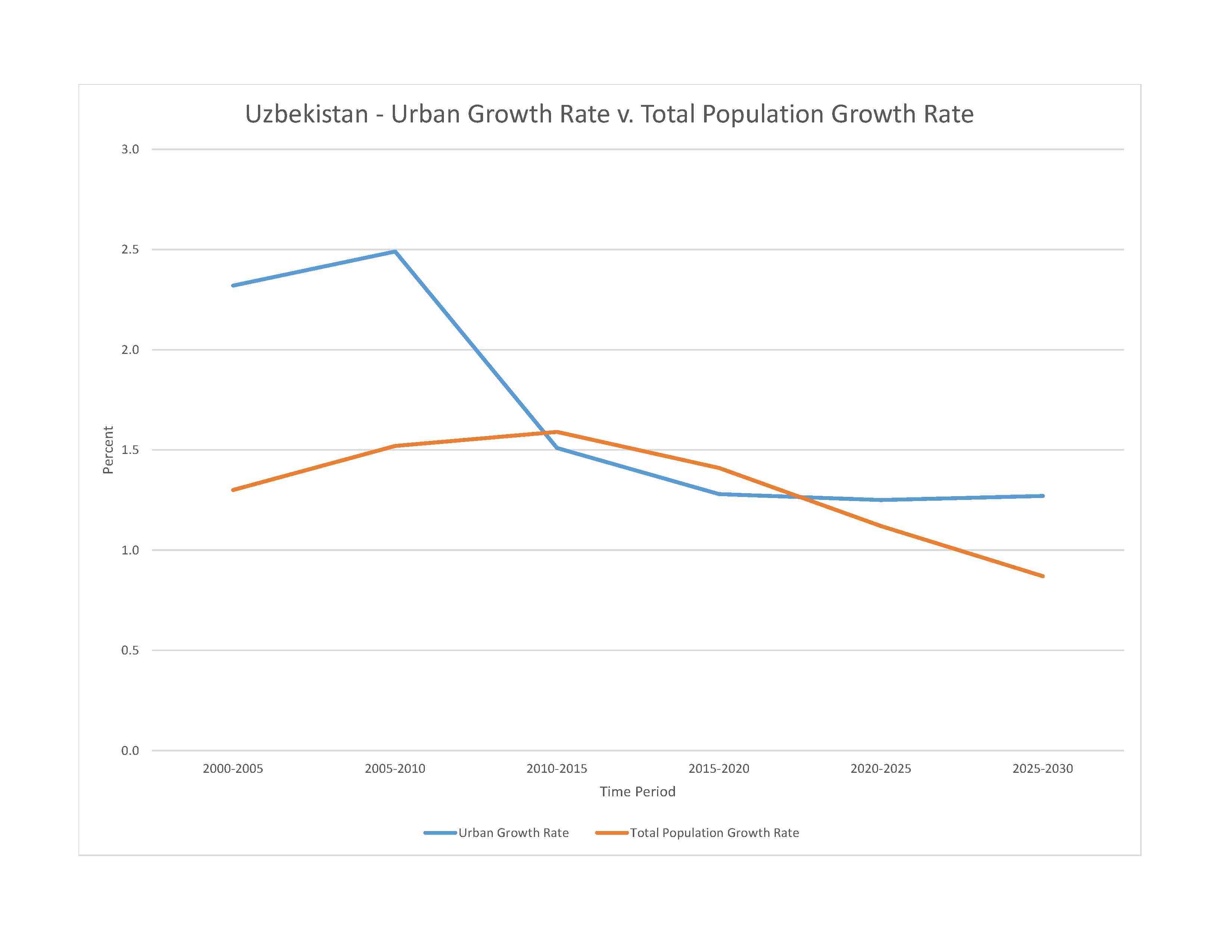
31,360,836 (2023 est.)
noun: Uzbekistani
adjective: Uzbekistani
Uzbek 83.8%, Tajik 4.8%, Kazakh 2.5%, Russian 2.3%, Karakalpak 2.2%, Tatar 1.5%, other 2.9% (2017 est.)
Uzbek (official) 74.3%, Russian 14.2%, Tajik 4.4%, other 7.1%
major-language sample(s):
Jahon faktlari kitobi, asosiy ma'lumotlar uchun zaruriy manba. (Uzbek)
The World Factbook, the indispensable source for basic information.
note: in the semi-autonomous Republic of Karakalpakstan, both the Karakalpak language and Uzbek have official status
Muslim 88% (mostly Sunni), Eastern Orthodox 9%, other 3%
0-14 years: 22.48% (male 3,612,997/female 3,437,866)
15-64 years: 70.64% (male 11,055,763/female 11,097,841)
65 years and over: 6.88% (2023 est.) (male 933,134/female 1,223,235)
total dependency ratio: 54
youth dependency ratio: 46.3
elderly dependency ratio: 7.2
potential support ratio: 13 (2021 est.)
total: 28.7 years (2023 est.)
male: 27.9 years
female: 29.5 years
1.61% (2023 est.)
22.2 births/1,000 population (2023 est.)
5.2 deaths/1,000 population (2023 est.)
-0.9 migrant(s)/1,000 population (2023 est.)
most of the population is concentrated in the fertile Fergana Valley in the easternmost arm of the country; the south has significant clusters of people, while the central and western deserts are sparsely populated
urban population: 50.5% of total population (2023)
rate of urbanization: 1.25% annual rate of change (2020-25 est.)

2.603 million TASHKENT (capital) (2023)
at birth: 1.08 male(s)/female
0-14 years: 1.05 male(s)/female
15-64 years: 1 male(s)/female
65 years and over: 0.76 male(s)/female
total population: 1.01 male(s)/female (2023 est.)
23.7 years (2019 est.)
30 deaths/100,000 live births (2020 est.)
total: 18.9 deaths/1,000 live births (2023 est.)
male: 21.9 deaths/1,000 live births
female: 15.7 deaths/1,000 live births
total population: 75.8 years (2023 est.)
male: 73.2 years
female: 78.6 years
2.92 children born/woman (2023 est.)
1.41 (2023 est.)
N/A
improved: urban: 99.6% of population
rural: 96.1% of population
total: 97.8% of population
unimproved: urban: 0.4% of population
rural: 3.9% of population
total: 2.2% of population (2020 est.)
6.8% of GDP (2020)
2.37 physicians/1,000 population (2014)
4 beds/1,000 population (2014)
improved: urban: 100% of population
rural: 100% of population
total: 100% of population
unimproved: urban: 0% of population
rural: 0% of population
total: 0% of population (2020 est.)
16.6% (2016)
total: 2.45 liters of pure alcohol (2019 est.)
beer: 0.18 liters of pure alcohol (2019 est.)
wine: 0.09 liters of pure alcohol (2019 est.)
spirits: 2.19 liters of pure alcohol (2019 est.)
other alcohols: 0 liters of pure alcohol (2019 est.)
total: 17.6% (2020 est.)
male: 34% (2020 est.)
female: 1.1% (2020 est.)
1.8% (2021)
68.6% (2023 est.)
women married by age 15: 0.2%
women married by age 18: 3.4% (2022 est.)
4.9% of GDP (2020 est.)
definition: age 15 and over can read and write
total population: 100%
male: 100%
female: 100% (2019)
total: 12 years
male: 12 years
female: 12 years (2021)
NOTE: The information regarding Uzbekistan on this page is re-published from the 2024 World Fact Book of the United States Central Intelligence Agency and other sources. No claims are made regarding the accuracy of Uzbekistan 2024 information contained here. All suggestions for corrections of any errors about Uzbekistan 2024 should be addressed to the CIA or the source cited on each page.
This page was last modified 04 May 24, Copyright © 2024 ITA all rights reserved.